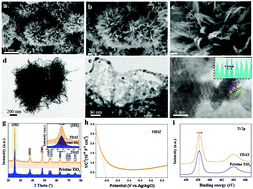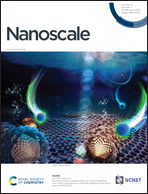The role of titanium-deficient anatase TiO2 interlayers in boosting lithium–sulfur battery performance: polysulfide trapping, catalysis and enhanced lithium ion transport†
Abstract
Despite the high theoretical energy density, lithium–sulfur (Li–S) batteries are currently facing two major problems, i.e., the shuttle of polysulfides and sluggish redox kinetics. Recent research has shown that electrocatalysts such as Pt and CoS2 can catalyze the polysulfide redox reaction and hence improve the kinetics and cycle performance of Li–S batteries. The current work demonstrates that a cheaper, lightweight and green alternative, i.e., titanium-deficient anatase TiO2 (TDAT) not only possesses a strong lithium polysulfide (LiPS) trapping ability via chemical interactions but also catalyzes the sulfur–sulfide redox reaction. Moreover, the TDAT-PE separator also shows high lithium conductivity, fast lithium diffusion, and facile lithium transference. As a result, the Li–S batteries with the TDAT modified PE interlayer show markedly higher sulfur utilization and capacity, rate and cycle performances. An average capacity fading of only 0.025% per cycle is achieved during the 1000 cycle durability test. This work presents a commercially viable, multifunctional interlayer capable of boosting the performance of Li–S batteries.



 Please wait while we load your content...
Please wait while we load your content...